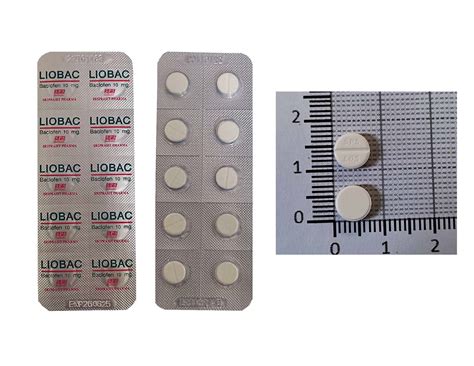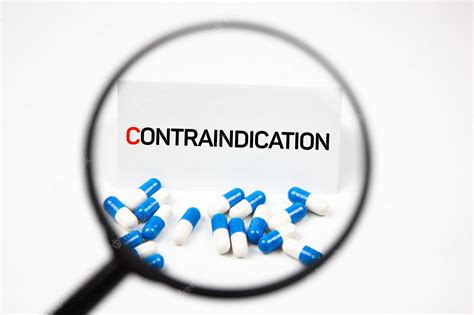Intro
Learn about Baclofen 10mg Tablet, a muscle relaxant used to treat spasticity and muscle spasms, with information on dosage, side effects, and interactions, including GABA receptors and neurological disorders.
Baclofen is a medication that has been widely used for the treatment of muscle spasticity, a condition characterized by excessive muscle tone or stiffness. The Baclofen 10mg tablet is one of the most commonly prescribed dosages for this medication. Understanding the properties, uses, and potential side effects of Baclofen is essential for patients who are considering or are already taking this medication.
Muscle spasticity can result from a variety of conditions, including multiple sclerosis, spinal cord injuries, and cerebral palsy. It manifests as stiffness, rigidity, or spasms in the muscles, which can significantly impair movement and cause discomfort or pain. Baclofen acts as a muscle relaxant and an antispastic agent, helping to reduce the frequency and severity of muscle spasms and improving mobility.
The mechanism of action of Baclofen involves its ability to stimulate the GABA_B receptors in the brain. GABA (gamma-aminobutyric acid) is an inhibitory neurotransmitter that helps to reduce the activity of neurons, thereby decreasing muscle tone. By mimicking the action of GABA, Baclofen enhances the inhibitory effects on the nervous system, leading to a decrease in muscle spasticity.
Baclofen 10mg Tablet Uses

The primary use of the Baclofen 10mg tablet is in the treatment of muscle spasticity. This condition can be debilitating, affecting not only the physical well-being of patients but also their quality of life. Baclofen is particularly useful in managing symptoms of muscle spasticity that are associated with neurological disorders. It is essential for patients to follow the prescribed dosage and administration instructions carefully to achieve the best therapeutic outcomes.
Benefits of Baclofen 10mg Tablets
The benefits of using Baclofen 10mg tablets include: - Reduced muscle spasms: By decreasing the frequency and severity of muscle spasms, Baclofen improves patient comfort and mobility. - Enhanced mobility: With reduced muscle tone, patients can experience improved range of motion and easier movement. - Pain relief: Decreasing muscle spasticity can also lead to a reduction in pain associated with muscle spasms. - Improved quality of life: By alleviating the symptoms of muscle spasticity, Baclofen can significantly enhance a patient's ability to perform daily activities and engage in social interactions.Administration and Dosage

The dosage of Baclofen can vary depending on the individual patient's response to the medication and the severity of their condition. The Baclofen 10mg tablet is often prescribed as an initial dose, which can be adjusted based on the patient's tolerance and therapeutic response. It is crucial for patients to adhere to the prescribed dosage regimen and not to adjust their dose without consulting their healthcare provider.
Precautions and Side Effects
While Baclofen is generally considered safe and effective, it can cause side effects in some patients. Common side effects include drowsiness, dizziness, weakness, and nausea. In rare cases, more severe side effects can occur, such as hallucinations, seizures, or severe allergic reactions. Patients should be aware of these potential side effects and report any concerns to their healthcare provider promptly.Interactions and Contraindications

Baclofen can interact with other medications, including central nervous system depressants, which can enhance its sedative effects. Patients should inform their healthcare provider about all medications they are taking to avoid potential drug interactions. Additionally, Baclofen is contraindicated in patients with a history of hypersensitivity to the drug and should be used with caution in patients with certain medical conditions, such as renal impairment.
Patient Education
Patient education plays a critical role in the safe and effective use of Baclofen. Patients should be informed about the potential benefits and risks of the medication, as well as the importance of adhering to the prescribed dosage regimen. They should also be advised on how to recognize and report side effects and how to manage their condition effectively while taking Baclofen.Special Considerations

Pregnant or breastfeeding women should use Baclofen with caution, as its effects on the fetus or baby are not well understood. Elderly patients may also require dose adjustments due to age-related changes in drug metabolism. Furthermore, patients with a history of substance abuse should be closely monitored due to the potential for dependence on Baclofen.
Withdrawal Symptoms
Abrupt discontinuation of Baclofen can lead to withdrawal symptoms, which can range from mild to severe. These symptoms may include anxiety, agitation, and muscle spasms. To avoid withdrawal, patients should taper off the medication gradually under the guidance of their healthcare provider.Future Perspectives

Research into the use of Baclofen and other antispastic agents continues to evolve. Future studies may explore new indications for Baclofen, improved dosing regimens, and the development of novel formulations that can enhance patient compliance and therapeutic outcomes.
Conclusion and Recommendations
In conclusion, the Baclofen 10mg tablet is a valuable treatment option for patients suffering from muscle spasticity. By understanding the benefits, potential side effects, and proper administration of this medication, patients can work closely with their healthcare providers to manage their condition effectively. It is recommended that patients maintain open communication with their healthcare team, adhere to their prescribed treatment plan, and seek medical advice if they have any concerns or questions about their medication.What is the primary use of Baclofen 10mg tablets?
+The primary use of Baclofen 10mg tablets is in the treatment of muscle spasticity, a condition characterized by excessive muscle tone or stiffness, often associated with neurological disorders.
How does Baclofen work to reduce muscle spasticity?
+Baclofen acts as a muscle relaxant and an antispastic agent by stimulating the GABA_B receptors in the brain, thereby enhancing the inhibitory effects on the nervous system and leading to a decrease in muscle spasticity.
What are the common side effects of Baclofen 10mg tablets?
+Common side effects of Baclofen include drowsiness, dizziness, weakness, and nausea. In rare cases, more severe side effects can occur, such as hallucinations, seizures, or severe allergic reactions.
We invite readers to share their experiences or ask questions about Baclofen 10mg tablets in the comments below. Your input can help others understand the benefits and challenges of this medication. If you found this article informative, please consider sharing it with others who might benefit from this information. Together, we can promote better health outcomes for individuals managing muscle spasticity and other related conditions.
